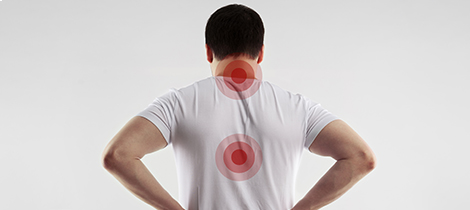Imagine this for a moment. You bend down to lift the weights at the gym like you do every day. The moment you lift them up, you feel a sharp pain running down your spine and hurting your back. You think the pain will go away in a day or two but in vain. Thus, it is crucial to implement the proper lifting techniques and avoid hurting your back.
This scenario is quite relatable to anyone who has hurt their back while lifting an object. Whether you are lifting weights or heavy objects at the workplace, the wrong technique can cause a variety of musculoskeletal problems.
5 proper lifting techniques you should try
The wrong lifting technique causes strain and sprains in the lower back. You may end up overstretching or tearing up the ligament in your back in an attempt to lift an object. Let’s check out the right lifting techniques that will get your job done without involving an injury.
Think through the task first
Proper lifting techniques are more than about bending the knee at an optimum angle. It is also about thinking and planning the lift to ensure that you start in a safe position.
Look at the object you have to lift. Now decide where you would like to put it and figure out a way to keep it there.
Stand close to the object you have to lift. Avoid lifting from a standing position or bending your waist while lifting.
Maintain a wide base of support
You are most likely to lose your balance and hurt your back if you try lifting without wide base support. Keep your feet shoulder-width apart. Make sure one foot is slightly ahead of the other before you lift the object.
Keep the natural curve of your lower back intact
The main purpose of lifting weights at the gym is to increase your core muscular strength. The right way to achieve this goal is to rest one knee on the floor while tightening the muscles in your abdomen, pelvis and back. No matter how heavy the object is, do not hold your breath while lifting it. Maintain the natural curve of your lower back and hold the object as close to your body as possible. Put the object on your knee gently as you prepare to stand.
Practise squatting
Even if you are squatting to lift the object, make sure you are doing it right. Start by squatting as close to the object as possible. Keep the buttocks out and bend the knees and hips when you are ready to lift the object. Is the object too heavy? In that case, Keep one knee close to the floor and the other knee bent at a right angle in front of you.
Make the most of your leg muscle
It’s a common misconception that lifting an object completely involves back muscles. The actual job is done by your leg muscles. Thus, make the most of your leg muscles while lifting an object instead of overstretching the back muscles. Hold the object as close to your body as possible while you are standing up, and keep the core muscle tight to prevent injury. Once you have stood up with the object, Use your feet to turn and not your back.
Lifting a heavy object is often a part of various workplaces. You can not avoid the tasks. But you can always learn the right way to do it and prevent serious back injuries. The licenced physiotherapists at Physiotherapy First are here to assist you throughout the recovery process in the case of any back injury.


